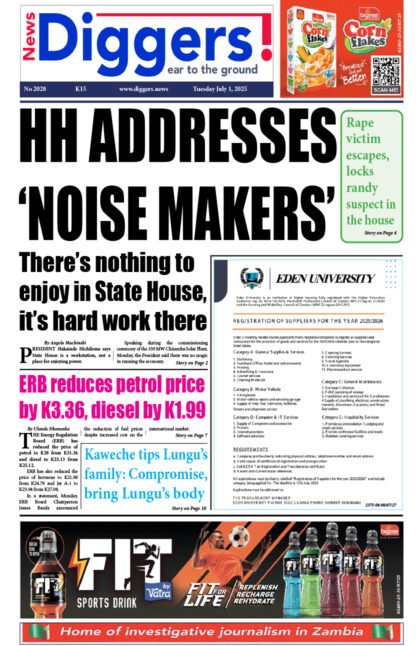Zambia’s credit rating downgrading to negative has sent worrying signals to domestic and international creditors that government may default on the Eurobond due to mature in 2022, among other looming debts, says economist Chibamba Kanyama.
Last week, Moody’s rating agency downgraded Zambia’s credit rating with a negative outlook and removed it from the Caa1 position to Caa2 owing to the country’s external liquidity pressure, impairing government’s ability to service debt over the medium-term and raise profitability of default over the near-term.
Commenting on the development in response to a press query, Kanyama said the poor rating by Moody served as a warning to the world that Zambia was at high risk of default such that bondholders should begin to worry about repayment, and that potential creditors should also prepare to lend to the Zambian government at a premium.
“Though the rating is focused on the Eurobonds as these are the debts under intense scrutiny and interest, all other creditors, including the domestic creditors, may become jittery! The rating, rightly or erroneously, is warning the world that Zambia is at high risk of default such that bondholders should begin to worry about repayment and potential creditors should prepare to lend at a premium if they have to. Locally, it affects the anticipated positive impact of the recently increased Monetary Policy Rate. Government may have hoped to increase the level of participation to government securities. As you know, the most recent auctions were undersubscribed. One thing to note is that Moody’s ratings are statistically driven and not so much about sentiment. As a result, investors tend to consider them to be authentic as they are based on actual data, such as economic growth prospects (the 2019 projection recently downgraded by the International Monetary Fund), external reserves, which are now said to be less than US $1.4 billion, growth in debt levels as a ratio of Gross Domestic Product and the fiscal deficit,” Kanyama said.
He, however, hoped that there would be a speedy stability in the copper mining industry following the provisional liquidation of Konkola Copper Mines Plc, saying higher output of copper would have a positive bearing on the reserves.
“I am also confident the recently announced Monetary Policy Rate by the Bank of Zambia will beef up foreign inflows into our commercial banks for redirection to government securities. However, the true impact of monetary policy increase from 9.75 per cent to 10.25 per cent may likely further slowdown economic growth depending on how the narrowed liquidity position affects private sector investment. In addition, investors in particular are already concerned the anticipated power-cuts may also slowdown economic expansion and this limits government options to counter investor fears. The best option under the circumstances is for government to re-open programme discussions with the International Monetary Fund. The expectation of all investors is that Zambia needs concessional credit lines mainly from the IMF, which will not only advance cash to support our balance of payments, but signal to the world that Zambia’s economic stabilization programme is right on track and this will calm investor anxieties,” said Kanyama.
“The IMF programme will also open fresh lines of financial support from both bilateral and multilateral lenders. Ghana was once in a worse off position than Zambia, but after successfully completing the IMF programme last year, it is able to issue fresh Eurobonds at reasonable cost. I am very sure the poor Moody’s rating is receiving necessary attention by government.”



















